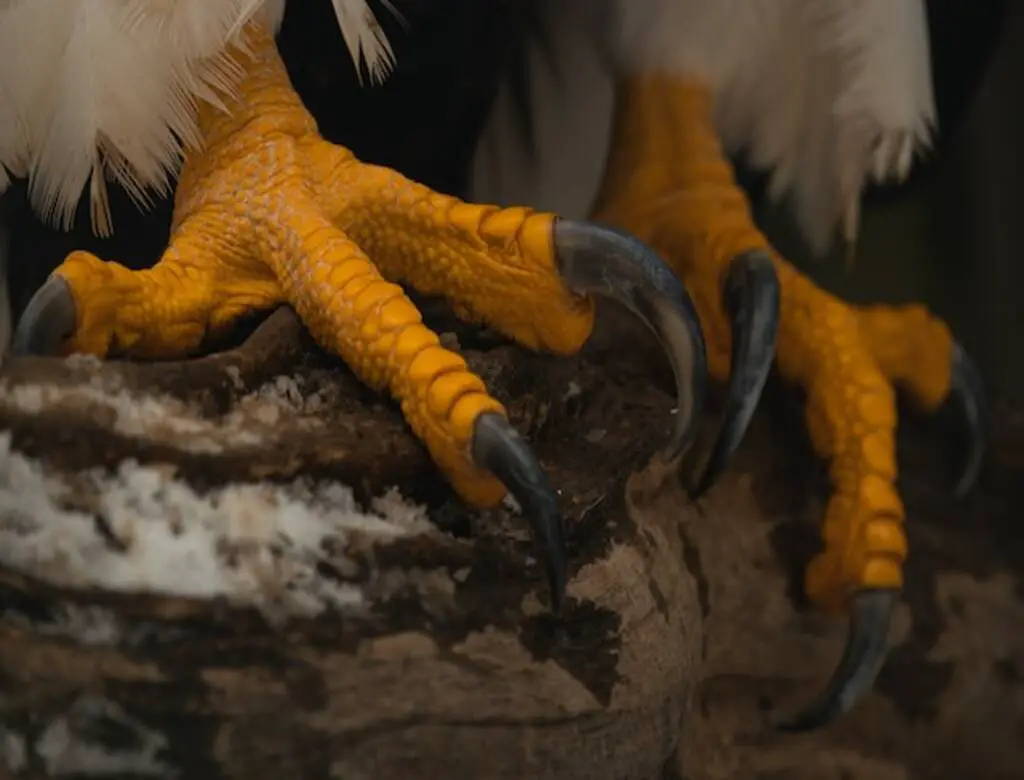Welcome to the ultimate guide to bird claws and talons! Whether you’re an avid birder or just curious about these fascinating structures, this guide will provide you with a comprehensive overview of its anatomy and functions.
From the sharp talons of raptors to the webbed feet of water birds, bird claws are incredibly diverse and play a crucial role in a bird’s life. Throughout this guide, you’ll learn about the different types of claws and talons, their functions, and how they are adapted to different bird species and environments.
So why are bird claws and talons so important? What makes them so fascinating? Keep reading to find out!
Table of Contents
- 1 Exploring Avian Foot Anatomy and Adaptations
- 2 What Are Bird Claws & Their Different Purposes?
- 3 Unique Foot Adaptations of Birds: Webbed and Lobed Feet
- 4 What Are Bird Talons?
- 5 The Diversity of Bird Talons
- 6 Bird Talon Appearance
- 7 Identifying Birds by Their Talons
- 8 How to Avoid Injury from Bird Talons
- 9 FAQs About Bird Claws & Talons
- 9.1 What are the claws of a bird called?
- 9.2 Do birds have claws or talons?
- 9.3 What is a bird’s sharp claw called?
- 9.4 What kind of feet and claws do birds have?
- 9.5 How many types of claws in birds are there?
- 9.6 Do birds have two claws?
- 9.7 Are claws and nails the same?
- 9.8 What are the claws of perching birds?
- 9.9 What type of claws does a duck have?
- 9.10 What birds have the longest claws?
- 9.11 What bird has the longest talons?
- 10 Conclusion
- 11 Author
Exploring Avian Foot Anatomy and Adaptations
Birds have a variety of foot types that have evolved to suit their specific needs. The shape and structure of a bird’s feet can tell us a lot about its behavior and habitat. Here are some of the most common types of bird feet and their anatomy and functions:
⏩ Anisodactyly
This is the most common type of bird foot, with three toes pointing forward and one pointing backward. The arrangement of the toes allows birds to perch on branches and walk on narrow surfaces with ease.
The backward-facing toe is called the hallux and is often larger and stronger than the other toes, providing support and balance.
Anisodactyl feet are found in a wide variety of bird species, including songbirds, raptors, and some waterfowl.
⏩ Syndactyly
In this foot type, two or more toes are fused together. Birds with syndactyl feet, such as kingfishers and bee-eaters, use them to dig burrows in the ground.
The fused toes act like a shovel, making it easier for the bird to excavate its nest or burrow. Syndactyl feet are also found in some bird species that live in aquatic environments, such as cormorants and pelicans.
⏩ Zygodactyly
Also known as “zygodactyl,” this foot type has two toes pointing forward and two pointing backward. Birds with zygodactyl feet, such as parrots and woodpeckers, are adapted for climbing and grasping branches.
The arrangement of the toes allows for a strong grip on perches and surfaces, making it easier for these birds to move around in trees and other elevated habitats.
⏩ Pamprodactyl
This foot type is characterized by all four toes pointing forward. Birds with pamprodactyl feet, such as swifts and hummingbirds, are adapted for hovering and aerial acrobatics.
The arrangement of the toes allows for a wide range of movement and control, making it possible for these birds to make quick, precise movements in the air.
⏩ Semi-Zygodactyl
This foot type has two toes pointing forward and two pointing backward, but the outer toe can be rotated to face forward or backward. Birds with heterodactyl feet, such as owls and ospreys, are adapted for grasping and carrying prey.
The ability to rotate the outer toe allows for a wider range of motion and flexibility when grasping objects, making it easier for these birds to catch and carry prey.
Semi-Zygodactyl feet are also found in some bird species that climb trees, such as the treecreeper.
⏩Heterodactyl
Heterodactyl feet are characterized by two toes that point forward and two toes that point backward, but the outer toe can rotate.
This foot structure is found in trogons, a group of tree-dwelling birds who use their feet for perching and capturing prey.
The fixed arrangement of the toes provides stability while perched, allowing trogons to patiently wait for their prey, and also allows them to climb and maneuver along branches effectively.
⏩ Specialized Functions
Birds have evolved these different types of feet to adapt to their habitats and behaviors. The shape and arrangement of their toes allow them to perform specialized functions such as perching, digging, climbing, hovering, grasping and carrying prey, and more.
Here is a table summarizing the types of bird feet and their functions:
| Foot Type | Toes | Function |
|---|---|---|
| Anisodactyly | Three forward-pointing toes and one backward | Adapted for perching and walking on narrow surfaces |
| Syndactyly | Two or more toes fused together | Used for digging burrows or nests in the ground or aquatic environments |
| Zygodactyly | Two forward-pointing toes and two backward | Adapted for climbing and grasping branches and surfaces |
| Heterodactyl | Two toes pointing forward and two pointing backward | Adapted for grasping and carrying prey or climbing trees |
| Pamprodactyl | All four toes point forward | Adapted for hovering and aerial acrobatics |
| Semi-Zygodactyl | Two forward-pointing toes and two backward, with the outer toe rotatable | Adapted for grasping and carrying prey or climbing trees |
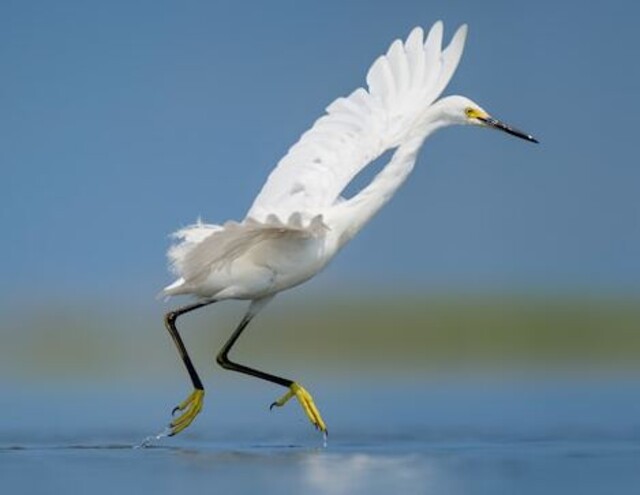
What Are Bird Claws & Their Different Purposes?
Bird claws are a vital part of a bird’s anatomy and play a crucial role in their behavior and survival. These specialized structures are made up of bone, keratin, and other tissues, and are attached to the bird’s toes. The shape, size, and strength of the claws vary depending on the bird’s species and habitat, and are adapted to suit their specific needs.
In the wild, bird claws serve several purposes, including:
- Grasping and holding onto prey while hunting
- Climbing and perching on trees and other surfaces
- Defending themselves against predators
- Maintaining balance and stability while in flight
The composition of bird claws is unique, with a combination of bone, keratin, and other tissues. The claws are strong, sharp, and curved, allowing birds to grip onto surfaces and objects with ease.
The size and shape of the claws also vary depending on the bird’s lifestyle, with birds of prey having larger, sharper claws for hunting and defense, while smaller birds have more delicate claws for perching and climbing.
Overall, bird claws are essential for a bird’s behavior and survival in the wild. Understanding their different purposes and composition can help us appreciate these amazing creatures even more.
| Bird Claw Purposes | Description |
|---|---|
| Grasping and holding onto prey while hunting | The strong, sharp, and curved claws of birds of prey allow them to grip onto their prey while hunting, preventing them from escaping. |
| Climbing and perching on trees and other surfaces | The size and shape of the claws of smaller birds are more delicate, allowing them to grasp onto narrow surfaces like branches and twigs while climbing or perching. |
| Defending against predators | The sharp claws of birds like roosters and raptors are used to defend themselves against predators, either by lashing out with them or by using them to fend off attackers. |
| Maintaining balance and stability while in flight | During flight, the claws of birds like eagles and hawks are used to maintain balance and stability, as they hold onto prey or navigate their surroundings. |
Unique Foot Adaptations of Birds: Webbed and Lobed Feet
When it comes to bird feet, there are several different types that serve various purposes and adaptions. Two of the most important types are webbing and lobation. Webbing refers to the presence of skin between a bird’s toes, while lobation describes the presence of lobes or flaps on the toes.
There are four subtypes of webbing:
- Palmate
- Totipalmate
- Semipalmate
- Lobate feet
⏩ Palmate: Waterbirds with Partially Webbed Feet
Palmate webbing is found in waterbirds such as ducks, geese, and swans. The webbing is only partial, with the front three toes being partially joined by skin. This allows for greater flexibility when swimming and walking on land.
⏩ Totipalmate: Fully Webbed Feet for Maximum Efficiency
Totipalmate webbing is found in birds such as pelicans, gannets, and cormorants. This type of webbing is fully developed, with all four toes completely joined by skin. This allows for maximum efficiency when swimming and diving.
⏩ Semipalmate: Shorebirds with Partial Webbing
Semipalmate webbing is found in shorebirds such as sandpipers, plovers, and avocets. The webbing is only partial, with the front toes being joined by a small amount of skin. This allows for better stability on soft and uneven surfaces.
⏩ Lobate Feet: Unique Webbing for Diving Birds
Lobate webbing is found in diving birds such as grebes and loons. The webbing is only on the toes and is shaped like lobes, which provide extra surface area for propulsion while swimming underwater. This unique webbing allows for efficient diving and maneuvering.
Here’s a table summarizing the different types of webbing and lobation in bird feet:
| Foot Type | Description | Example Birds |
|---|---|---|
| Palmate | Skin connects front three toes | Ducks, geese |
| Totipalmate | Skin connects all four toes | Pelicans, cormorants |
| Semipalmate | Skin connects front two toes | Sandpipers, plovers |
| Lobate | Flaps of skin on toes for support | Sandpipers, plovers, birds of prey |
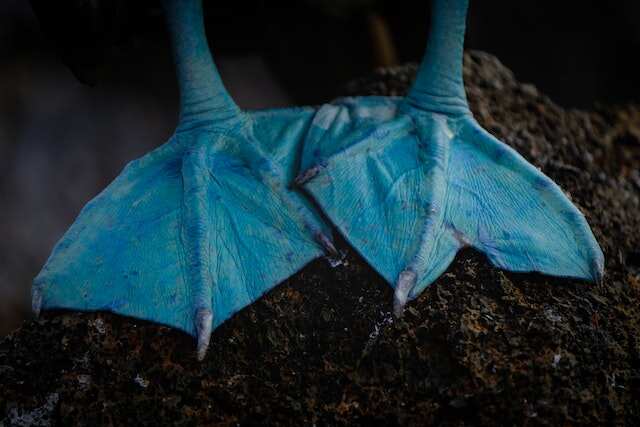
What Are Bird Talons?
Bird talons, also known as claws, are specialized structures that are unique to birds. These sharp, curved claws are located at the end of the bird’s toes and are used for a variety of purposes in the wild.
The primary function of bird talons is to capture and secure prey. Birds of prey, such as eagles, hawks, and owls, have particularly strong talons that are capable of grasping and holding onto prey animals.
In addition to hunting, bird talons are also used for perching and gripping onto branches and other structures. When it comes to defense and protection, bird talons are a formidable weapon.
Many birds, such as roosters and turkeys, have sharp spurs on their legs that can be used to fend off predators or other birds in territorial disputes.
Overall, bird talons are a crucial part of a bird’s anatomy and play a vital role in their survival in the wild. Whether it’s capturing prey, perching, or defending themselves, these specialized structures are a testament to the incredible adaptations that birds have developed over millions of years of evolution.
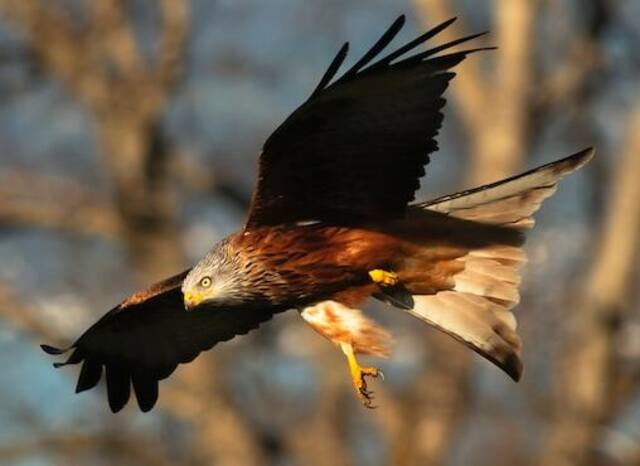
The Diversity of Bird Talons
Bird talons exhibit a remarkable diversity in their shape and size, with each type of talon being finely tuned to suit the unique hunting and feeding habits of the bird species.
From the sharp and pointed talons of raptors that are optimized for piercing and grasping prey, to the hooked talons of owls that are designed to hold onto prey, and the long and slender talons of songbirds that are adept at grasping small insects and seeds, the variations in talon morphology are extensive.
Observing and analyzing the talons of birds can provide valuable information about their behavior and ecology. For instance, the talon shape and size can indicate the bird’s preferred prey, hunting style, and habitat.
The talons of a bird that preys on large mammals such as eagles and hawks are often larger and more robust, with sharper tips, to help them grasp and immobilize their prey.
On the other hand, birds that feed on smaller prey, such as songbirds, often have slender and agile talons that enable them to snatch insects and seeds from tree branches.
Bird Talon Appearance
Bird talons are not only distinguished by their size and shape, but also by their appearance. The color and texture of a bird’s talons can provide important clues about the species. For instance, some birds have brightly colored talons, which may serve as a signal to attract a mate or to intimidate competitors.
On the other hand, some birds have rough, textured claws that help them grasp onto prey or perch on rough surfaces. The texture and color of bird talons can also vary depending on the bird’s environment and lifestyle.
For example, birds that live in sandy areas may have talons with a rough, gritty texture to help them grip the ground. Birds that hunt in murky waters may have talons that are pale in color to blend in with their surroundings, making it easier to sneak up on prey.
Being able to recognize and identify bird talons can be a valuable skill for bird watchers and scientists alike. By closely observing a bird’s talons, one can gather important information about the bird’s behavior, habitat, and evolutionary history.
So, by paying attention to the details of a bird’s talons, you can gain a deeper appreciation for these fascinating creatures and the role they play in our ecosystem.
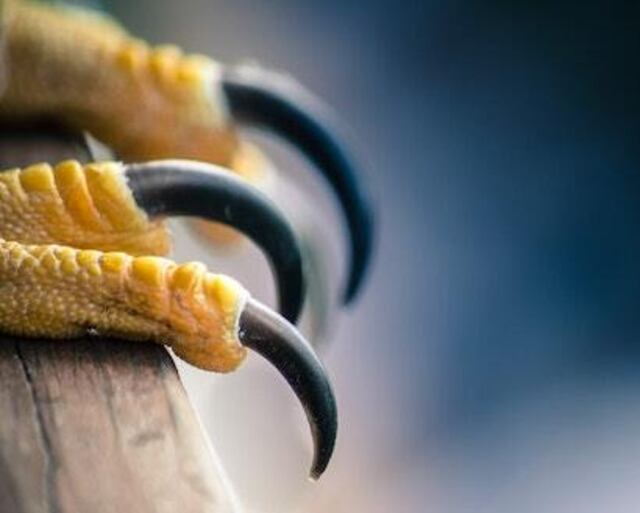
Identifying Birds by Their Talons
Birds have adapted their talons for specific hunting and feeding habits. These talons can provide valuable clues for identifying birds. Here are some key sub-sections to help you identify birds by their talons:
⏩ Falcons: Aerial Hunters with Slender Talons
Falcons are known for their impressive aerial acrobatics, and their talons reflect their specialized hunting style. Their long and slender claws have sharp, curved tips that enable them to grab prey mid-flight.
Falcons also have a unique mechanism that allows them to lock their talons in place, providing a secure grip on their prey.
⏩ Vultures and Condors: Hooked Talons for Scavenging
Vultures and condors are scavengers that feed on carrion, and their talons reflect their feeding habits. Their claws are large and hooked, designed to rip apart tough flesh and bone.
⏩ Eagles and Hawks: Majestic Raptors with Formidable Talons
Eagles and hawks are powerful raptors that use their sharp talons to catch prey. Their claws are large and strong, with sharp, curved tips that enable them to grab and hold onto their prey tightly.
⏩ Owls: Silent Hunters with Unique Talons
Owls are silent hunters that rely on their specialized talons to catch prey. Their large and powerful claws have a unique structure that allows them to grip their prey tightly without making a sound.
The outer talon on their foot is reversible, which helps them to grab prey from different angles. Additionally, their feathers are adapted for silent flight, allowing them to approach their prey undetected.
⏩ Small Talons of Perching Birds for Different Functions
Perching birds, such as songbirds and sparrows, have smaller talons that are adapted for perching and grasping branches. Their claws are shorter and less curved than those of raptors and scavengers.
Some perching birds, like woodpeckers, have two toes pointing forward and two pointing backward, which helps them to climb and grip bark.
Other perching birds, like finches, have specialized toe arrangements that enable them to crack open seeds.
Here is a table for identifying birds by their talons:
| Bird Type | Talon Characteristics |
|---|---|
| Falcons | Long, slender talons with sharp, curved tips |
| Vultures/Condors | Large, hooked talons for tearing flesh and bone |
| Eagles/Hawks | Large, strong talons with sharp, curved tips |
| Owls | Large, powerful talons with a unique structure for silent hunting |
| Perching Birds | Smaller talons adapted for perching and grasping branches |
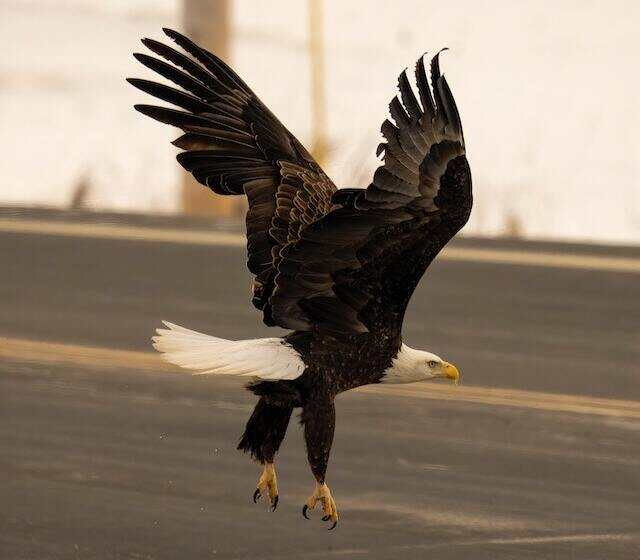
How to Avoid Injury from Bird Talons
Handling birds with talons can be a tricky and dangerous business. Whether you’re a seasoned bird handler or a curious novice, it’s important to take the necessary precautions to avoid injury from these sharp and powerful claws. Here are a few tips to help you stay safe:
- Approach birds with caution, especially if they are unfamiliar to you. Birds can be easily startled and may lash out if they feel threatened.
- Wear protective gear such as thick gloves, arm guards, and goggles to protect yourself from scratches, bites, and other injuries.
- Learn proper handling techniques from experienced bird handlers or trainers. This will help you understand how to safely handle birds and avoid accidental injury.
- Do not attempt to handle wild raptors, as they are protected by law and can be dangerous to handle without proper training and permits.
By following these simple tips, you can minimize the risk of injury from bird talons and enjoy a safe and rewarding experience handling these fascinating creatures.
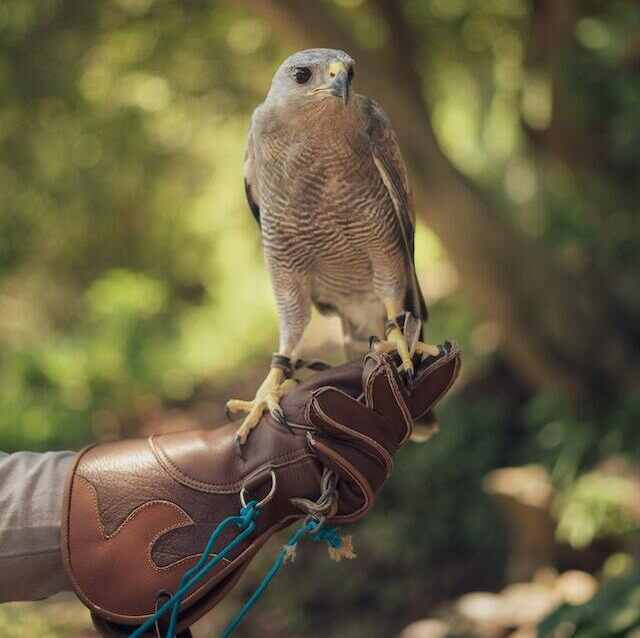
FAQs About Bird Claws & Talons
If you’re a bird enthusiast, you’ve probably noticed their impressive claws. These sharp, curved appendages play a vital role in a bird’s daily life, from hunting prey to perching on branches. Here are some frequently asked questions about bird claws.
What are the claws of a bird called?
The claws of a bird are called talons.
Do birds have claws or talons?
Technically, birds have talons, but the terms “claws” and “talons” are often used interchangeably.
What is a bird’s sharp claw called?
A bird’s sharp claw is called a talon.
What kind of feet and claws do birds have?
Birds have four toes on each foot, with three toes pointing forward and one pointing backward. Their claws are curved and sharp, designed for gripping onto prey and perching on branches.
How many types of claws in birds are there?
There are two types of claws in birds: grasping claws and perching claws.
Do birds have two claws?
Yes, birds have two claws on each toe.
Are claws and nails the same?
No, claws and nails are not the same. Claws are curved and sharp, while nails are flat and dull.
What are the claws of perching birds?
The claws of perching birds are called zygodactyl. This means that they have two toes pointing forward and two toes pointing backward, which helps them grip onto branches and other surfaces.
What type of claws does a duck have?
Ducks have webbed feet with claws that are designed for swimming and walking on soft surfaces.
What birds have the longest claws?
The harpy eagle has the longest talons of any bird, with talons that can be up to 5 inches long.
What bird has the longest talons?
The African fish eagle has the longest talons of any bird in proportion to its body size.
Conclusion
In conclusion, bird claws and talons are fascinating and complex structures that play a crucial role in a bird’s life. Throughout this guide, we have covered a variety of key points, including the different types of claws and talons, their functions, and how they are adapted to different bird species and environments.
It is clear that bird claws and talons are essential for a bird’s survival, allowing them to hunt, defend themselves, and navigate their environment. As humans, we can learn a lot from these remarkable structures and the birds that use them.
Whether you are a bird enthusiast, a biologist, or simply curious about the natural world, we hope that this guide has provided you with a comprehensive understanding of bird claws and talons.
Related Post: 11 Birds with Hooked Beaks and Talons

